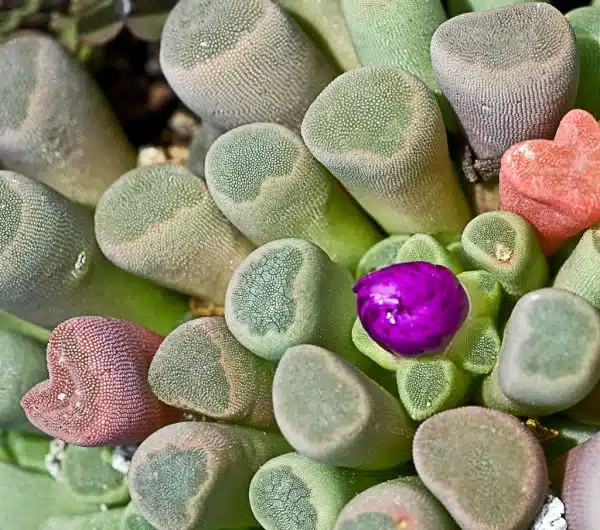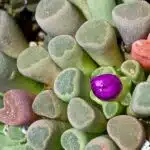Succulents, with their diverse shapes and colors, have become a popular choice among plant enthusiasts. Their ability to thrive in dry conditions and low maintenance make them an ideal option for those who are new to gardening or living in areas with limited access to water. However, despite their resilience, succulents can suffer from various environmental stresses that may leave them looking dull and lifeless. In this article, we will explore how to revive a succulent and restore it to its former glory.
Reviving a succulent involves identifying the underlying cause of its decline, whether it is due to overwatering, underwatering, pest infestation or disease. By addressing the root cause of the problem and providing the necessary care, we can bring back vitality to these fascinating plants. Whether you want to save a beloved succulent or nurse one back to health as part of your horticultural practice, learning how to revive a succulent is an essential skill that every gardener should possess. With patience, attention to detail and some basic knowledge on caring for these unique plants, you can help your succulent thrive once again.
Signs Of A Struggling Succulent
Imagine a succulent as a tiny human being. Just like us, succulents have their own needs and struggles. They require water, sunlight, and proper care to thrive. And just like humans, they can also experience problems that hinder their growth. As a succulent horticulturist, it is important to be able to identify these issues in order to revive the plant’s health.
Assessing hydration is one of the first things to consider when trying to revive a struggling succulent. Overwatering or underwatering can lead to wilting or yellowing leaves, which are signs of dehydration. Checking the soil moisture level by inserting a finger about an inch deep into the soil can help determine whether the plant needs more or less water.
Identifying root rot is another common issue that affects succulents. This occurs when roots become waterlogged and begin to decay, often caused by overwatering or poor drainage. Signs of root rot include blackened or mushy roots and a foul odor coming from the soil. If left untreated, root rot can lead to irreversible damage and even death of the plant.
Assessing The Damage
Assessing the Damage: Evaluating Symptoms and Identifying Causes
When reviving a succulent, it is important to assess the damage first. This involves evaluating the symptoms presented by your plant and identifying their underlying causes. Common symptoms of a dying succulent include yellowing leaves, rotting stems or roots, wilting, and stunted growth. These symptoms may indicate different problems such as overwatering, underwatering, pest infestation or disease.
Yellowing leaves are often an indication of overwatering or nutrient deficiency. Overwatered succulents tend to have mushy stems or roots due to excess water that leads to root rot. On the other hand, underwatered succulents look shriveled and wilted due to insufficient water supply. Pests such as mealybugs can also cause yellowing leaves by sucking the sap from your plant.
Stunted growth is another common symptom that indicates inadequate lighting or poor soil conditions. Succulents require bright light for optimal growth, so placing them in low-light areas may hinder their development. Poor soil drainage can also lead to root rot which ultimately affects your plant’s growth rate. By assessing these symptoms and identifying their underlying causes, you will be able to revive your succulent successfully by addressing its specific needs in terms of watering frequency, lighting requirements, pest control measures and soil composition.
Understanding Your Succulent’s Needs
Now that you have assessed the damage on your succulent and identified its specific problems, you need to understand its needs better. Knowing what your plant requires in terms of watering frequency, soil type and lighting requirements will help you determine how best to care for it going forward. So let us delve into understanding these needs more deeply in the next section without delay!
Understanding Your Succulent’s Needs
To properly care for your succulent, it’s essential to understand its specific needs. Succulents require a moderate amount of sunlight exposure to thrive. They need at least 6 hours of indirect sunlight per day, so be sure to place them in a location where they can receive sufficient light. However, too much direct sunlight can cause sunburn or leaf damage. So, it’s crucial to find the right balance.
Identifying nutrient deficiencies is also crucial in reviving your succulent. Succulents require specific nutrients like nitrogen, phosphorus, and potassium to grow and survive. If your plant is showing signs of discoloration or stunted growth, it could indicate a nutrient deficiency. For example, yellow leaves may indicate a lack of nitrogen, while brown tips could mean there’s too much salt in the soil.
Proper sunlight exposure and identifying nutrient deficiencies are two critical factors in reviving your succulent. To further improve its chances of survival, consider other factors such as soil and potting considerations. The soil you use should allow for proper drainage and be well-aerated to prevent root rot. Additionally, the size of the pot should fit the size of your plant adequately. By taking these steps, you’ll give your succulent the best chance at thriving once again.
Soil And Potting Considerations
When considering the best soil for a succulent, sandy soils with good drainage are ideal, as succulents prefer a soil that is not overly wet and retains some moisture. The size of the pot is important, as too large a pot can lead to excessive moisture and cause root rot. Also, good drainage is essential, as it helps to prevent overwatering and root rot. For light exposure, succulents prefer bright, indirect sunlight and should be exposed to some amount of direct sunlight during the day.
Soil Type
As a succulent horticulturist, I understand the importance of soil type when reviving a succulent. The best soil for succulents is one that is well-draining and has a sandy composition. Succulents are adapted to survive in arid environments where water is scarce, which means they need soil that doesn’t hold onto moisture for too long. A well-draining soil will prevent waterlogged roots and root rot, which can be fatal for succulents.
Soil composition is also important when choosing the best soil for your succulent. Succulents prefer soil that is slightly acidic with a pH range of 6.0-7.0. A good mix for succulents would be composed of 50% coarse sand or perlite, 25% regular potting soil, and 25% peat moss or coconut coir. This mix will provide the necessary drainage while still retaining enough moisture to keep your succulent hydrated.
When reviving a succulent, it’s crucial to consider the type of soil it’s planted in. Using the best soil with proper drainage and composition will give your plant the best chance at survival. Remember to always check the moisture level of your soil before watering and adjust accordingly to avoid overwatering or underwatering your succulent. With these considerations in mind, you can successfully revive your beloved succulent back to its healthy state.
Pot Size
Selecting appropriate pot size is another important consideration when reviving a succulent. Choosing the right size ensures that your succulent has enough room to grow and thrive without being overcrowded or constricted by its container. The size of the pot will also affect the soil’s ability to drain, which can impact the plant’s health.
When selecting a pot for your succulent, it’s important to choose an attractive one that complements the plant’s natural beauty. However, aesthetics should not be the only factor considered. The pot must also have drainage holes to prevent water from accumulating at the bottom, leading to root rot. Additionally, it’s crucial to choose a pot that is not too large for your succulent, as this can cause overwatering and nutrient deficiency due to excess soil.
Overall, choosing an appropriate pot size is just as crucial as selecting the right soil composition when reviving a succulent. It ensures proper drainage and allows your plant enough space to grow while avoiding overcrowding and nutrient depletion. By considering all these factors together in reviving your beloved succulent back to its healthy state, you can ensure a successful outcome for both yourself and your plant.
Watering Techniques
As a succulent horticulturist, I cannot overemphasize the importance of watering techniques in reviving your succulent. Watering is the most crucial aspect of caring for your succulent. It is very easy to make mistakes in this process, and these mistakes can lead to the death of your plant.
Mistakes to avoid when watering your succulent include overwatering and underwatering. Overwatering can cause root rot, which ultimately leads to the death of your plant. On the other hand, underwatering can cause dehydration and wilting. Therefore, it is important to find a balance between these two extremes. Another mistake to avoid is using tap water that contains high levels of salts and chemicals that can harm your plant. To prevent this from happening, use distilled or filtered water.
The frequency of watering your succulent will depend on factors such as humidity, temperature, and pot size. Generally, it is recommended that you water once every 2-3 weeks during the growing season (spring and summer) and once every 4-6 weeks during the dormant season (fall and winter). However, it’s essential to observe your plant regularly and adjust accordingly because each succulent species has its unique needs.
In maintaining a healthy succulent, proper fertilization is crucial. In the next section, we will discuss how to fertilize your succulent correctly without causing any damage. Remember always to be mindful of how much water you give your plants as too much or too little can lead to their demise.
Fertilizing Your Succulent
When it comes to fertilizing your succulent, there are two main types of fertilizers to consider: organic and synthetic. Organic fertilizers are made from natural sources such as compost or manure, while synthetic fertilizers are chemically made. While both can provide necessary nutrients for your succulent, there are some important differences to consider.
Organic fertilizers tend to be slower-acting and gentler on the plant, providing a more gradual release of nutrients over time. They also improve soil health and promote beneficial microorganisms that can aid in nutrient absorption. However, they may not provide all of the necessary nutrients in the correct ratios for optimal growth.
On the other hand, synthetic fertilizers are faster-acting and often contain a specific balance of nutrients tailored for certain types of plants. While they can provide quick results, they can also be harsher on the plant if used improperly and may contain chemicals that are harmful to the environment.
If you choose to use an organic fertilizer, there are several DIY recipes you can try at home using ingredients like eggshells or compost tea. When applying fertilizer to your succulent, always follow package instructions or recipe guidelines carefully and avoid over-fertilizing which can lead to burning or damage to the plant’s roots.
Transition: Now that you know how to properly fertilize your succulent, it’s important to also be aware of common pest infestations that can harm your plant’s health. In order to maintain a healthy and thriving succulent garden, it’s crucial to know how to identify and treat these pests effectively.
Treating Pest Infestations
It’s a sad day when pests invade your succulent garden. You’ve worked hard to keep your plants healthy and beautiful, only to have them destroyed by tiny insects. But fear not, for there are ways to treat pest infestations without resorting to harsh chemicals or professional extermination.
- Prevention is key – inspect new plants before bringing them home, keep your garden clean and free of debris, and avoid overwatering as this can attract pests.
- Use natural remedies such as neem oil or insecticidal soap to control infestations.
- If the infestation is severe, consider professional extermination services, but make sure they use environmentally friendly methods.
Remember that prevention is always better than cure when it comes to pest infestations in your succulent garden. By keeping a watchful eye on your plants and using natural remedies where possible, you can help ensure that your garden remains healthy and beautiful for years to come.
With pests under control, the next step is managing diseases that may affect your succulents.
Managing Diseases
As we’ve discussed in the previous section on Treating Pest Infestations, succulents are hardy plants that can withstand a lot of stress. However, they are not immune to diseases that can cause them harm. As a succulent horticulturist, it’s important to know about common succulent diseases and how to prevent them from infecting your plants.
One of the best preventative measures you can take is to ensure your succulents are planted in well-draining soil. Succulents don’t like wet feet and are susceptible to root rot when waterlogged. It’s also important to avoid overwatering and to allow the soil to dry out completely between watering sessions. Additionally, keeping your succulents well-spaced will help prevent the spread of disease from one plant to another.
Some common succulent diseases include black spot, powdery mildew, and root rot. Black spot appears as circular or irregular black spots on the leaves and stems of the plant, while powdery mildew looks like a white or gray powder on the surface of leaves. Root rot is caused by overwatering and results in a mushy, discolored root system. To manage these diseases, it’s important to remove infected leaves or sections of the plant immediately and avoid overhead watering.
In our next section on pruning and propagation, we’ll learn about how these techniques can be used as preventative measures against disease and pests. By maintaining healthy plants through regular pruning and propagating new growth, we can ensure our succulents stay vibrant and disease-free for years to come.
Pruning And Propagation
Pruning techniques are essential for the healthy growth of succulents. Pruning helps to remove dead or diseased parts of the plant, allows for better air circulation, and can improve the overall appearance of the plant. Pruning also encourages new growth and can help to control the size of the plant.
When pruning a succulent, it is important to use sharp, clean tools to avoid damaging the plant. Cut just above a leaf node to encourage new growth in that area. It is also important to prune regularly rather than waiting until the plant has become overgrown or unhealthy.
Propagation success tips are crucial for those looking to expand their collection of succulents. One popular method of propagation is through stem cuttings. Simply take a cutting from a healthy part of the plant and allow it to dry out for a few days before planting it in well-draining soil. Another method is through leaf cuttings, where individual leaves are removed from the parent plant and planted in soil until they develop roots and begin growing into new plants.
Moving on from pruning and propagation tips, choosing the right lighting is vital for maintaining healthy succulents. Succulents thrive in bright sunlight but can also do well under artificial grow lights if natural light is not an option. It’s important to monitor how much light your succulent is receiving as too much direct sunlight can burn the leaves while too little light can cause them to stretch out and become weak. By following these guidelines, you can ensure your succulent will continue thriving for years to come.
Choosing The Right Lighting
As a succulent horticulturist, I understand the importance of choosing the right lighting for my plants. Light is an essential factor in the growth and overall health of succulents. When it comes to lighting, there are two options: natural and artificial. As much as possible, it is best to opt for natural light as it provides the necessary and balanced spectrum of color that succulents need for photosynthesis.
However, if natural light is not an option, artificial light can be used as a substitute. When choosing artificial lighting, it is important to consider the spectrum of light that the plant needs. Succulents require a specific range of light spectrum that falls between 400-700 nm wavelength – this includes blue and red lights which are vital in photosynthesis.
Choosing the right spectrum of light will help ensure proper growth and development of your succulent plant. It is also important to note that different stages of growth require different amounts of light. For example, during the vegetative stage, plants need more blue light while during flowering they require more red light. By understanding these factors and applying them accordingly, you can guarantee a successful revival process for your succulent plant.
Moving on from choosing the right lighting spectrum, another crucial aspect in reviving your succulent is temperature and humidity control. Maintaining appropriate levels will prevent stress on your plant and promote healthy growth.
Temperature And Humidity Control
Succulents are a popular choice for indoor plants. They are easy to care for, require little water, and can add a touch of greenery to any space. However, these plants can still experience issues with temperature and humidity that can impact their overall health. It is important to consider the environment in which your succulent is living and make adjustments accordingly.
One way to control the temperature around your succulent is to keep it away from direct sunlight or heat sources. Succulents prefer temperatures between 60-80°F (15-26°C), so placing them near windows or vents may cause stress on the plant. Additionally, if you live in an area with extreme temperatures, such as hot summers or cold winters, it may be necessary to move your succulent to a more moderate location.
Humidity can also play a role in the health of your succulent. While these plants are known for their ability to thrive in dry conditions, they still require some level of moisture in the air. A simple way to increase humidity is by using a humidity tray filled with pebbles and water. This allows for evaporation and creates a small microclimate around the plant. Misting techniques can also help increase humidity levels but should be done sparingly as too much moisture can lead to fungal growth.
- To create a humidity tray:
- Fill a shallow dish with pebbles
- Add enough water to cover half of the pebbles
- Place your potted succulent on top of the pebbles
- When misting:
- Use room temperature water
- Mist early in the day so leaves have time to dry before nightfall
- Avoid misting too often as this can lead to overwatering
By controlling temperature and humidity levels, you can ensure that your succulent is thriving in its environment. However, there are still other environmental stressors that can impact the health of your plant. In the next section, we will explore ways to overcome these stressors and keep your succulent healthy and happy.
Overcoming Environmental Stressors
Adequate sunlight is essential for a succulent to be healthy and thrive. Succulents should be placed in an area that receives 4-6 hours of direct sunlight per day. Watering a succulent regularly is important to ensure it is not too dry or too wet. A succulent should be watered when the soil is dry to the touch, typically every 1-2 weeks. Soil drainage is also necessary for a succulent to be healthy. A succulent potting mix with good drainage is recommended to prevent root rot. Finally, a soil mix that is aerated and porous will help to ensure proper soil drainage for a succulent.
Proper Sunlight
Understanding the proper sunlight requirements for succulents is crucial in reviving these plants from environmental stressors. The intensity and duration of sunlight greatly affect their growth and overall health. Succulents are adapted to thrive in arid environments, so they need plenty of direct sunlight to photosynthesize properly. However, too much sun can scorch their leaves and dry out the soil.
When it comes to indoor vs outdoor lighting, both have their pros and cons. Indoor lighting can be controlled, ensuring that succulents receive consistent light throughout the day. However, natural sunlight provides a broader spectrum of light that is essential for plant growth. Outdoor succulents also benefit from natural air circulation which helps prevent pests and diseases.
To ensure your succulent receives optimal sunlight, place it near a south-facing window or under grow lights if indoors. Keep an eye on the intensity of the light by monitoring any signs of leaf burn or color changes. Remember that different species have different light requirements, so research the specific needs of your succulent before placing it in its new location. With proper understanding and care for their sunlight needs, your succulent will soon thrive once again.
Watering Regularly
Watering regularly is another crucial aspect to consider in overcoming environmental stressors for succulents. Succulents are adapted to store water in their leaves, stems, and roots, making them drought-tolerant plants. However, this does not mean that they can survive without water for extended periods. Watering frequency depends on various factors such as humidity levels, temperature, soil type and drainage, and the size of the pot. Overwatering is a common mistake that many succulent owners make, leading to root rot and other fungal diseases.
To prevent overwatering, it is essential to ensure that the soil dries out between watering intervals. Clay pots are ideal for succulents because they allow excess water to evaporate quickly compared to plastic or glazed ceramic pots. The best way to determine when your succulent needs watering is by sticking your finger 1-2 inches into the soil. If it feels dry at this depth, it’s time to water your plant. Avoid watering from overhead as this can cause water droplets to sit on the leaves and attract pests and fungal diseases.
In conclusion, proper watering practices play a significant role in reviving stressed succulents. Overwatering prevention is critical in ensuring that your plant thrives because too much moisture leads to root rot and other fungal diseases. By understanding when and how much to water your succulent depending on its specific needs, you will be able to provide optimal conditions for growth and recovery.
Soil Drainage
Proper soil drainage is another crucial aspect to consider in overcoming environmental stressors for succulents. Succulents thrive in well-draining soils that allow excess water to drain away quickly, preventing waterlogging and root rot. Poor drainage is one of the most common mistakes that many succulent owners make, leading to stunted growth and other health issues.
To ensure proper soil drainage, it is essential to use the right type of soil and potting mix. Succulents require a well-draining mix that contains coarse sand, perlite, or pumice. Avoid using garden soil or heavy potting mixes as they retain moisture and lead to poor drainage. Additionally, ensure that your pot has adequate drainage holes at the bottom to allow excess water to escape.
Another important technique for ensuring proper soil drainage is through watering practices. Overwatering leads to waterlogging and poor soil drainage, so it is essential to avoid this common mistake. As mentioned earlier, sticking your finger into the soil can help determine when your succulent needs watering. Additionally, if you notice any signs of overwatering such as yellowing leaves or mushy stems, reduce watering frequency until the plant recovers.
In conclusion, proper techniques for ensuring proper soil drainage are crucial in overcoming environmental stressors for succulents. These techniques include using the right type of soil and potting mix and avoiding overwatering. By understanding how to provide optimal conditions for growth and recovery through proper soil drainage practices, you can enjoy healthy and thriving succulent plants in your home or garden.
Timing For Revival
Reviving a succulent is like resuscitating a patient. It takes time, patience, and keen observation to bring it back to life. Assessing the urgency of the situation is critical before embarking on the revival process. A shriveled or discolored succulent indicates that it has been deprived of water for an extended period, whereas a yellowing or blackening plant signals overwatering. The former requires immediate attention, while the latter can be remedied with slight adjustments in watering patterns.
Identifying signs of improvement is essential in determining whether your efforts are bearing fruit or not. Succulents have a remarkable ability to recover from near-death experiences, but they take their time doing so. After two weeks of consistent care, you should see some progress such as plumper leaves, vibrant colors, or new growth. However, if there is no improvement after one month, it may be time to consider other factors such as soil quality or sunlight exposure.
Reviving a succulent requires constant monitoring of its progress. After identifying signs of improvement, continue caring for the plant by providing optimal light conditions and watering patterns. Keep track of its growth patterns and make adjustments where necessary. Patience is key during this process as succulents take their time recovering from damage caused by neglect or over-enthusiasm in watering. With time and effort, you will soon see your once lifeless plant flourish again in all its glory!
Monitoring Progress
After carefully timing the revival process, it is important to monitor the progress of your succulent. Tracking growth is essential in determining whether adjustments need to be made in your care routine. It is recommended to take photos of your succulent at regular intervals, such as weekly or bi-weekly, to visually document its progress.
When monitoring growth, pay attention to any changes in color, texture, and overall appearance. Succulents that are on the path to recovery should exhibit signs of new growth such as sprouting leaves or stems. However, if there are no signs of improvement after a few weeks, it may be necessary to adjust your care routine.
Adjusting care may include changing watering frequency or amount, adjusting lighting conditions, or even repotting the succulent into fresh soil. These changes should be made gradually and with caution to avoid shocking the plant’s system. Keep in mind that each succulent has unique needs and may require different levels of care.
By tracking growth and adjusting care accordingly, you can successfully revive your succulent. Celebrating your succulent’s recovery can bring a sense of fulfillment and satisfaction knowing that you have played a role in its survival. In the next section, we will discuss some ways in which you can showcase your healthy succulent and inspire others to do the same.
Celebrating Your Succulent’s Recovery
After successfully reviving your succulent, it is important to celebrate its recovery. This can be a great way to show appreciation for the hard work and dedication you put into caring for your plant. Celebratory activities can include taking photographs of your plant’s progress, sharing your success with friends and family, or even throwing a small party in honor of your succulent.
Additionally, incorporating succulent inspired crafts into your celebration can be a fun and creative way to express your love for these unique plants. These crafts can include creating a terrarium or planter, making succulent-themed artwork, or even designing your own personalized pot for your plant. By engaging in these activities, you can further cultivate your appreciation for the beauty and resilience of these fascinating plants.
Overall, celebrating the recovery of your succulent can be a rewarding experience that allows you to reflect on the hard work and dedication required to care for these plants. By incorporating celebratory activities and succulent inspired crafts into this process, you can deepen your connection with both the plant itself and the broader community of horticulturists who share a passion for cultivating beauty in all forms.
Conclusion
Succulents are hardy plants, but they can still struggle from time to time. As a succulent horticulturist, it is my duty to help you revive your struggling plant. With proper assessment of the damage done and understanding your succulent’s needs, you can nurse your plant back to life.
Attention must be given to the soil and potting considerations as well as watering techniques. It is important to overcome any environmental stressors that may have caused the initial problem. Timing for revival and monitoring progress are key elements in bringing your succulent back to health. Finally, celebrate your succulent’s recovery by enjoying its beauty and resilience.
Remember, a succulent represents strength and perseverance through difficult times. By nursing it back to life, we too can gain strength and perseverance in our own lives. Let us all strive to be like the succulent, strong and resilient in the face of adversity.
Image Credits
- “Very Strange Succulent” by Steve Corey (featured)





























